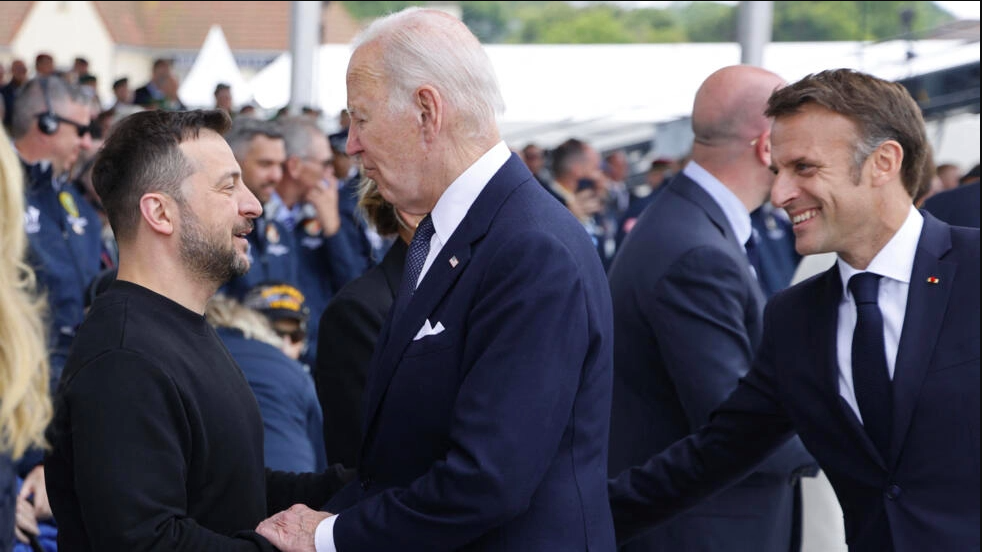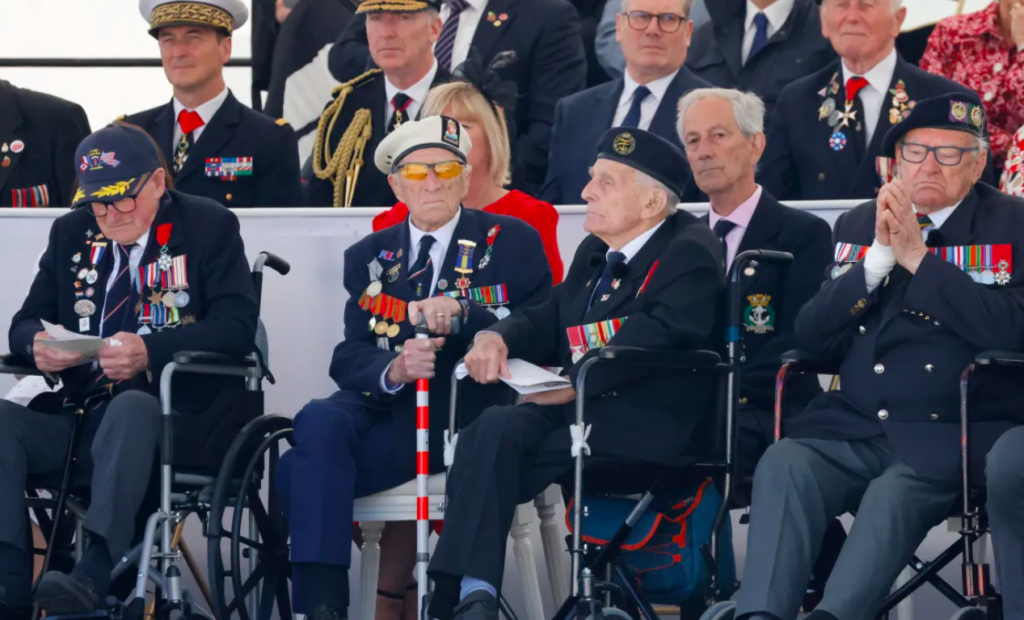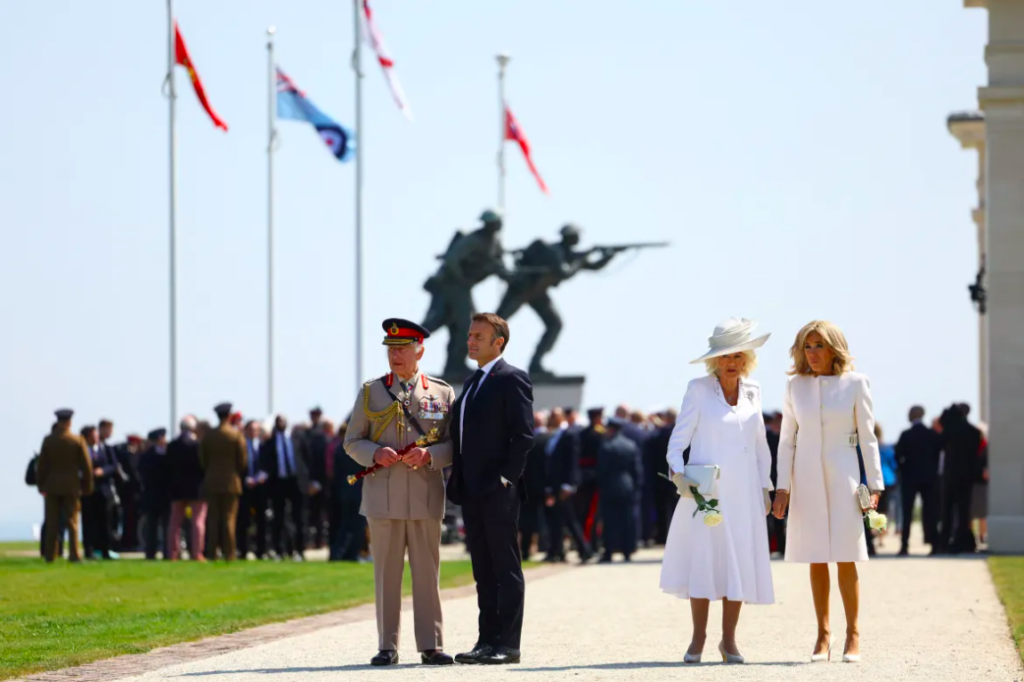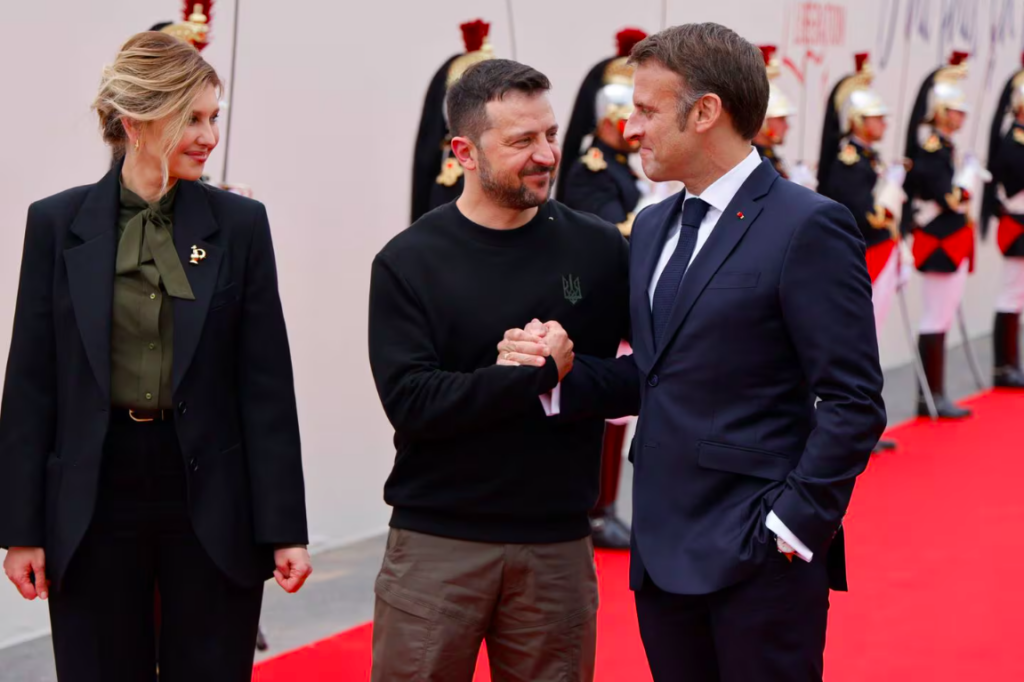
Published 06/07/2024 09:00 | Edited 06/07/2024 10:37
In 2024, Europe celebrates the 80th anniversary of D-Day, the historic Allied landing on the beaches of Normandy on June 6, 1944, which the West considers to mark the beginning of the end of the Second World War. The absence of Russia, a key player in the defeat of Nazi Germany long before that, and the controversial presence of Ukraine, a country with a history of collaboration with the Nazis, raise important questions about contemporary memory and politics.
Gradually, the countries associated with NATO, – the European military treaty created against the USSR -, are consolidating a historical revisionism, with the aim of erasing the fundamental contribution of the communists to the Nazi-fascist defeat. Moscow’s grandiose Victory Day celebrations on May 9 have also been scorned by Western leaders, ignoring Soviet Russia’s true role in ridding the world of Hitler.
Operation Overlord, known as D-Day, was the largest land military maneuver in history. Planned and trained for months in England, the operation involved the landing of 150,000 soldiers from the United States, United Kingdom, Canada and other allied countries in German-occupied France. The late entry of the USA into the war was only possible after one of the rare foreign attacks on its territory: the Japanese attack on Pearl Harbor in 1941. On June 6, 1944, thousands of ships left the English coast towards the beaches of Normandy, with massive air support.
The Allies’ mission was clear: to liberate France and advance against Germany to end Nazi rule in Europe. Despite the Wehrmacht’s preparedness and robust defenses along the “Atlantic Wall,” the Allies’ strategy of deception led the main German forces to expect an attack at Calais. The ensuing battle was fierce and bloody, but the Allies’ air and sea superiority, in addition to their extensive training, ensured their victory.
With the number of veterans of that operation, many aged 100 and over, rapidly dwindling, this will likely be the last significant ceremony in Normandy to honor them in their presence. About 200 veterans, most of them American or British, participated in events throughout the day.
British D-Day veterans attend commemorative ceremony marking the 80th anniversary of the WWII Allied “D-Day” landings in Normandy

Celebrations and Russia’s exclusion
D-Day celebrations have evolved over the years. Originally, the ceremonies excluded representatives from Germany, a reflection of the deep wounds left by the war. Helmut Kohl, German chancellor in the 1980s, highlighted the difficulty of celebrating a date associated with the defeat and death of so many Germans, while so many war veterans were still alive. However, the narrative changed, recognizing D-Day as the beginning of the fall of the Third Reich and the beginning of democracy in Germany. Today, the presence of German leaders is a constant in the celebrations.
In 2024, however, one of the most delicate issues was the absence of Russia. Operation Overlord represented the opening of a second front, something that Josef Stalin had been pushing for since the German invasion of the Soviet Union in 1941. The Soviet contribution to the Nazi defeat, with losses estimated at 20 million lives, has always been recognized. In 2004, Russian President Vladimir Putin was invited to the 60th anniversary of D-Day, and again in 2014, despite Russia’s annexation of Crimea.
Current tensions obscure the scale of what is being celebrated: From 1941, the Soviet Union bore the brunt of the Nazi war machine and played perhaps the most important role in the Allied defeat of Hitler. The Red Army was “the main engine of Nazism’s destruction,” writes British historian Max Hastings in “Inferno: The World at War, 1939-1945.”
The Soviet Union paid the highest price: although the numbers are not exact, an estimated 26 million Soviet citizens died during World War II, including up to 11 million soldiers. At the same time, the Germans suffered three-quarters of their wartime losses fighting the Red Army.
The epic battles that eventually reversed the Nazi advance – the brutal winter siege of Stalingrad, the clash of thousands of armored vehicles at Kursk (the largest tank battle in history) – were unparalleled on the Western Front, where the Nazis committed fewer resources. military. The savagery displayed was also of a different degree to that experienced further west.
“The Holocaust obscures German plans that envisaged even more murders. Hitler didn’t just want to eradicate the Jews; he also wanted to destroy Poland and the Soviet Union as states, exterminate their ruling classes and kill tens of millions of Slavs”, writes historian Timothy Snyder in “Bloodlands: Europe between Hitler and Stalin”. The objective has always been to depopulate Eastern Europe for the Aryanization of these territories.
By 1943, the Soviet Union had already lost around 5 million soldiers and two-thirds of its industrial capacity to the Nazi advance. The fact that it still managed to reverse the German invasion is a testament to the courage of the Soviet war effort. But it came at a shocking price.
In his memoirs, Eisenhower was horrified by the extent of the carnage: “When we flew to Russia in 1945, I did not see a house standing between the country’s western borders and the area around Moscow. Across this devastated region, Marshal Zhukov told me, such numbers of women, children and elderly people were killed that the Russian government would never be able to estimate the total.”
The UK’s King Charles, Queen Camilla, French President Emmanuel Macron and his wife Brigitte Macron attend the ceremony to mark the 80th anniversary of D-Day at Ver-sur-Mer’s British Normandy Memorial.

Always little Zelensky
Russia’s invasion of Ukraine in 2022 drastically altered the political landscape. Hopes for a Russia subordinated to the Western liberal model have dissipated. French authorities initially considered the presence of a Russian representative, but after resistance from Washington, London and Berlin, they decided to exclude him. “In the face of Russia’s war of aggression against Ukraine, which has worsened in recent weeks, there are simply no conditions”, explained the Elysee Palace.
Instead, Ukrainian President Volodimir Zelenski was present, alongside leaders such as Emmanuel Macron, Joe Biden, King Charles and Olaf Scholz. This decision is controversial, given the collaboration of parts of Ukraine with Nazi Germany during World War II. Ukrainian nationalist groups collaborated with the Nazis at various times, complicating Ukraine’s historical role in the conflict.
“This event and day serve as a reminder of the courage and determination shown in the pursuit of freedom and democracy,” said Ukrainian President Volodymyr Zelenskyy in a post on X, announcing his arrival at Thursday’s ceremonies in France.
The President of France, Emmanuel Macron, greeted the President of Ukraine, Volodymyr Zelensky and his wife Olena Zelenska, upon their arrival to take part in the ceremony commemorating the 80th anniversary of the Allied “D-Day” landings in Normandy, in Saint-Laurent-sur -Mer, in northwest France.

Ukrainian collaborationism
During Nazi Germany’s occupation of Poland and Soviet Ukraine, Ukrainians were torn between resistance and collaboration. In September 1941, German-occupied Ukraine was divided between the Galicia District of the Nazi General Government and the Reichskommissariat Ukraine. Many Ukrainians in the west of the country saw collaboration with the Nazis as an opportunity to free themselves from Soviet rule and establish an independent state.
Ukrainians collaborated with Nazi Germany in many ways, including local administration, auxiliary police, Schutzmannschaft, German armed forces, and as concentration camp guards. One of the most notorious episodes was the participation of Ukrainian auxiliary police in the Babi Yar massacre, where tens of thousands of Jews were murdered.
Before Operation Barbarossa, the German invasion of the USSR, around 4,000 Ukrainians, under orders from the Wehrmacht, attempted to cause disruption behind Soviet lines. After capturing Lviv, a city with a significant Ukrainian minority, the leaders of the Organization of Ukrainian Nationalists (OUN) proclaimed a new Ukrainian state on June 30, 1941, hoping that the Germans would support their cause. During the German-Polish war of 1939, the OUN had already shown itself to be a faithful German auxiliary.
Despite initial hopes of German support for Ukrainian independence, the Nazi administration had other plans, focusing on the Lebensraum program and the Aryanization of the population. Nazi policies pitted Slavic nations against each other, with the OUN carrying out attacks on Polish villages to expel or exterminate these populations, culminating in massacres in Volhynia and eastern Galicia.
Holocaust and pogroms
The elimination of Jews in Ukraine began just days after the Nazi occupation, under the anti-Semitic charade of Jewish Bolshevism. The Ukrainian auxiliary police, formed in August 1941, were used to capture Jews for massacres in places such as Babi Yar. In several cities and towns, such as Lviv and Lutsk, Ukrainians actively participated in pogroms and the elimination of Jews.
Pogroms in Lviv resulted in the deaths of 7,000 Jews, led by Ukrainian nationalists and the Ukrainian People’s Militia. In Boryslav, Jews were brutally murdered by an angry mob after being forced to clean bodies of men murdered by Soviets, dance and then beaten to death with axes and other objects.
More than 5,000 Ukrainian Red Army soldiers signed up to train with the SS in Trawniki, helping with the Final Solution. They served in all extermination camps and played a crucial role in suppressing uprisings in ghettos such as those in Warsaw and Białystok.
The participation of Ukrainian collaborators in Nazi crimes is a matter of painful public debate in Ukraine. In 2006, the newspaper Ukraine Christian News recognized the documentation and evidence of Ukrainian collaboration, highlighting the complexity and sensitivity of the topic.
The commemorations of the 80th anniversary of D-Day highlight the complex relationships between history, memory and contemporary politics. The exclusion of Russia, which played a crucial role in the Nazi defeat, and the inclusion of Ukraine, a country with a controversial wartime record, reflect current geopolitical tensions. This anniversary of D-Day is a reminder of the sacrifice of millions and an opportunity to reflect on the lessons of history, at a time when Europe faces new challenges to peace and stability.
Source: vermelho.org.br

